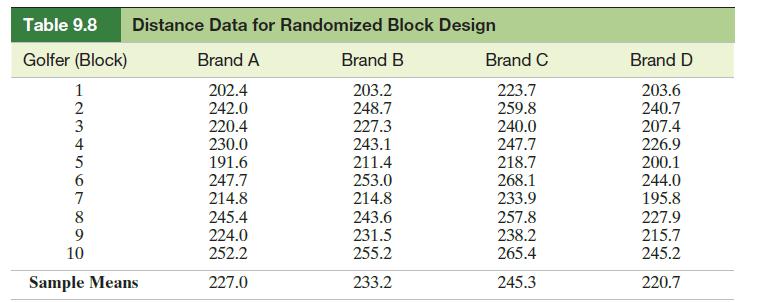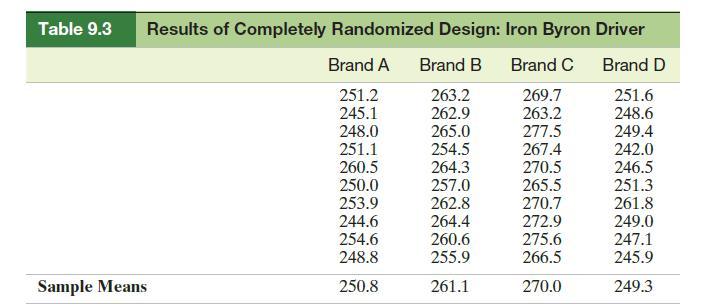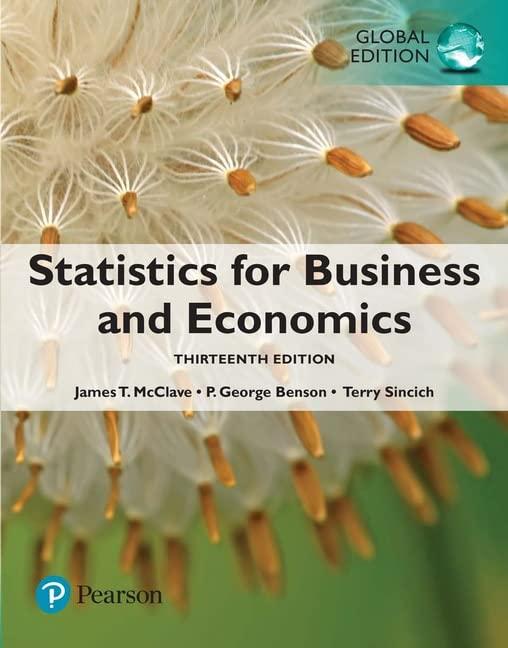Apply Bonferronis procedure to the data in Example 9.8. Use an experimentwise error rate (EER) of .05
Question:
Apply Bonferroni’s procedure to the data in Example 9.8. Use an experimentwise error rate (EER) of .05 to rank the mean distances of the four golf ball brands. Interpret the results.
Example 9.8
Refer to Example 9.7. Suppose the randomized block design of part b is employed, employing a random sample of 10 golfers, with each golfer using a driver to hit four balls, one of each brand, in a random sequence.
a. Set up a test of the research hypothesis that the brand mean distances differ. Use α = .05.
b. The data for the experiment are given in Table 9.8. Use statistical software to analyze the data and conduct the test set up in part a.
Example 9.7
Refer to Examples 9.4–9.6. Suppose the USGA wants to compare the mean distances associated with the four brands of golf balls when struck by a driver but wishes to employ human golfers rather than the robot Iron Byron. Assume that 10 balls of each brand are to be used in the experiment.
a. Explain how a completely randomized design could be employed.
b. Explain how a randomized block design could be employed.
c. Which design is likely to provide more information about the differences among the brand mean distances?
Example 9.5
Refer to the completely randomized design ANOVA conducted in Example 9.4.
Are the assumptions required for the test approximately satisfied?
Example 9.4
Suppose the USGA wants to compare the mean distances associated with four different brands of golf balls when struck with a driver. A completely randomized design is employed, with Iron Byron, the USGA’s robotic golfer, using a driver to hit a random sample of 10 balls of each brand in a random sequence. The distance is recorded for each hit, and the results are shown in Table 9.3, organized by brand.
Example 9.6
Refer to the completely randomized design of Example 9.4, in which we concluded that at least two of the four brands of golf balls are associated with different mean distances traveled when struck with a driver.
Use Tukey’s multiple comparisons procedure to rank the treatment means with an overall confidence level of 95%.
Estimate the mean distance traveled for balls manufactured by the brand with the highest rank.
Step by Step Answer:

Statistics For Business And Economics
ISBN: 9781292227085
13th Global Edition
Authors: Terry Sincich James Mcclave, P. George Benson





